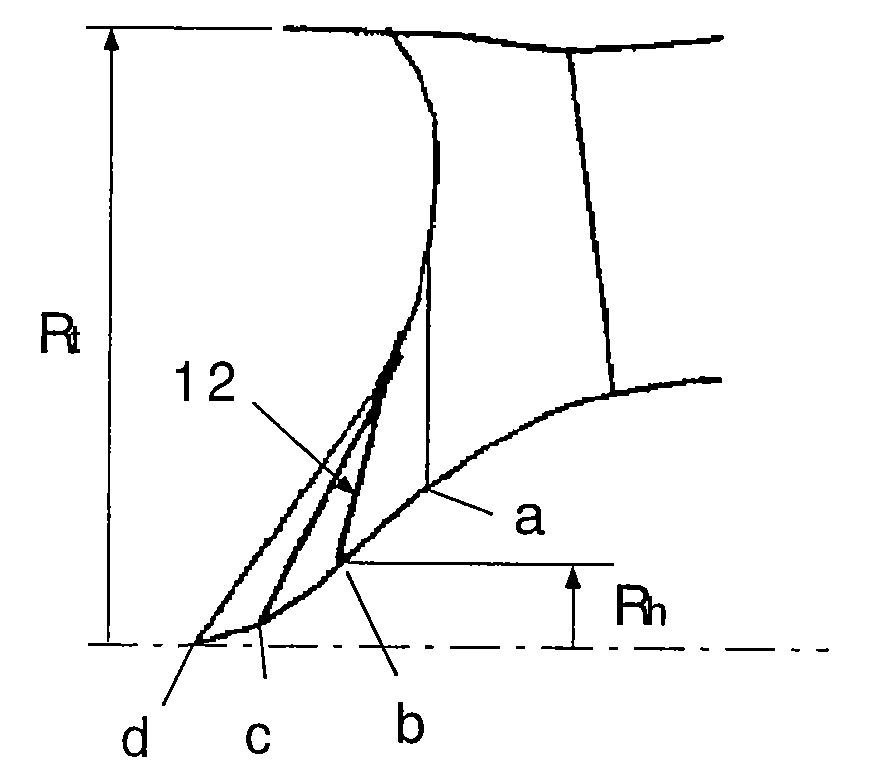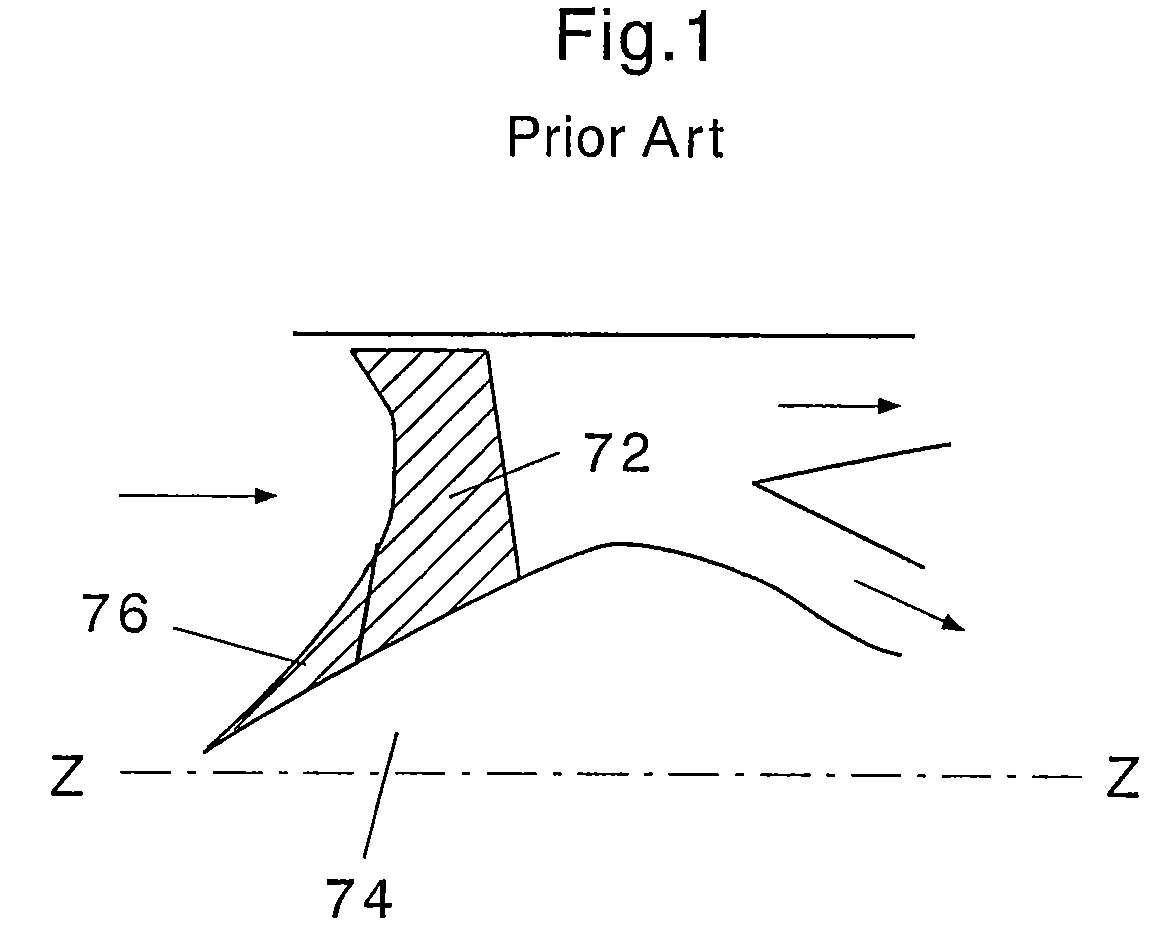Turbofan engine
a technology of turbofan and engine body, which is applied in the direction of machines/engines, waterborne vessels, climate sustainability, etc., can solve the problems of increasing engine weight and engine weight, and achieve the effect of increasing the flow rate, increasing the hub-side pressure ratio, and increasing the flow ra
- Summary
- Abstract
- Description
- Claims
- Application Information
AI Technical Summary
Benefits of technology
Problems solved by technology
Method used
Image
Examples
first embodiment
[First Embodiment]
[0064]FIGS. 6A to 6C are diagrams showing an embodiment of the turbofan engine according to the invention. In these drawings, FIG. 6A shows a constant pressure ratio line, FIG. 6B shows a distribution of the pressure ratio in a span direction, and FIG. 6C shows a comparison with the conventional art. These are obtained by a simulation result (CFD calculation result) using a computer.
[0065]In FIG. 6A, a to j indicate the constant pressure ratio line from the leading edge part to the trailing edge part of the fan first-stage rotating blade according to the invention. From this drawing, it is understood that the pressure efficiently increases on the hub side of the fan first-stage rotating blade 10.
[0066]In FIG. 6B, a to j correspond to those of FIG. 6A. From this drawing, it is understood that the pressure ratio on the hub side of the fan first-stage rotating blade 10 is larger than those on the tip side and the mid span.
[0067]As shown in FIG. 6C, the CFD calculation...
PUM
| Property | Measurement | Unit |
|---|---|---|
| chord length | aaaaa | aaaaa |
| chord lengths | aaaaa | aaaaa |
| outer-diameter | aaaaa | aaaaa |
Abstract
Description
Claims
Application Information
 Login to View More
Login to View More - R&D
- Intellectual Property
- Life Sciences
- Materials
- Tech Scout
- Unparalleled Data Quality
- Higher Quality Content
- 60% Fewer Hallucinations
Browse by: Latest US Patents, China's latest patents, Technical Efficacy Thesaurus, Application Domain, Technology Topic, Popular Technical Reports.
© 2025 PatSnap. All rights reserved.Legal|Privacy policy|Modern Slavery Act Transparency Statement|Sitemap|About US| Contact US: help@patsnap.com



